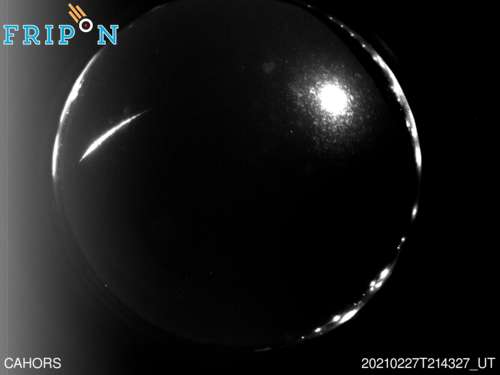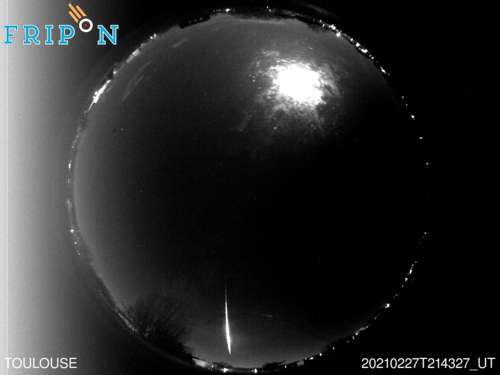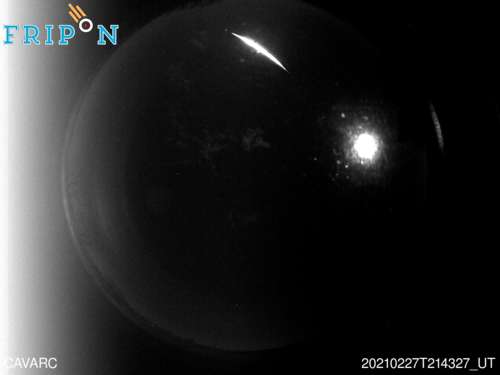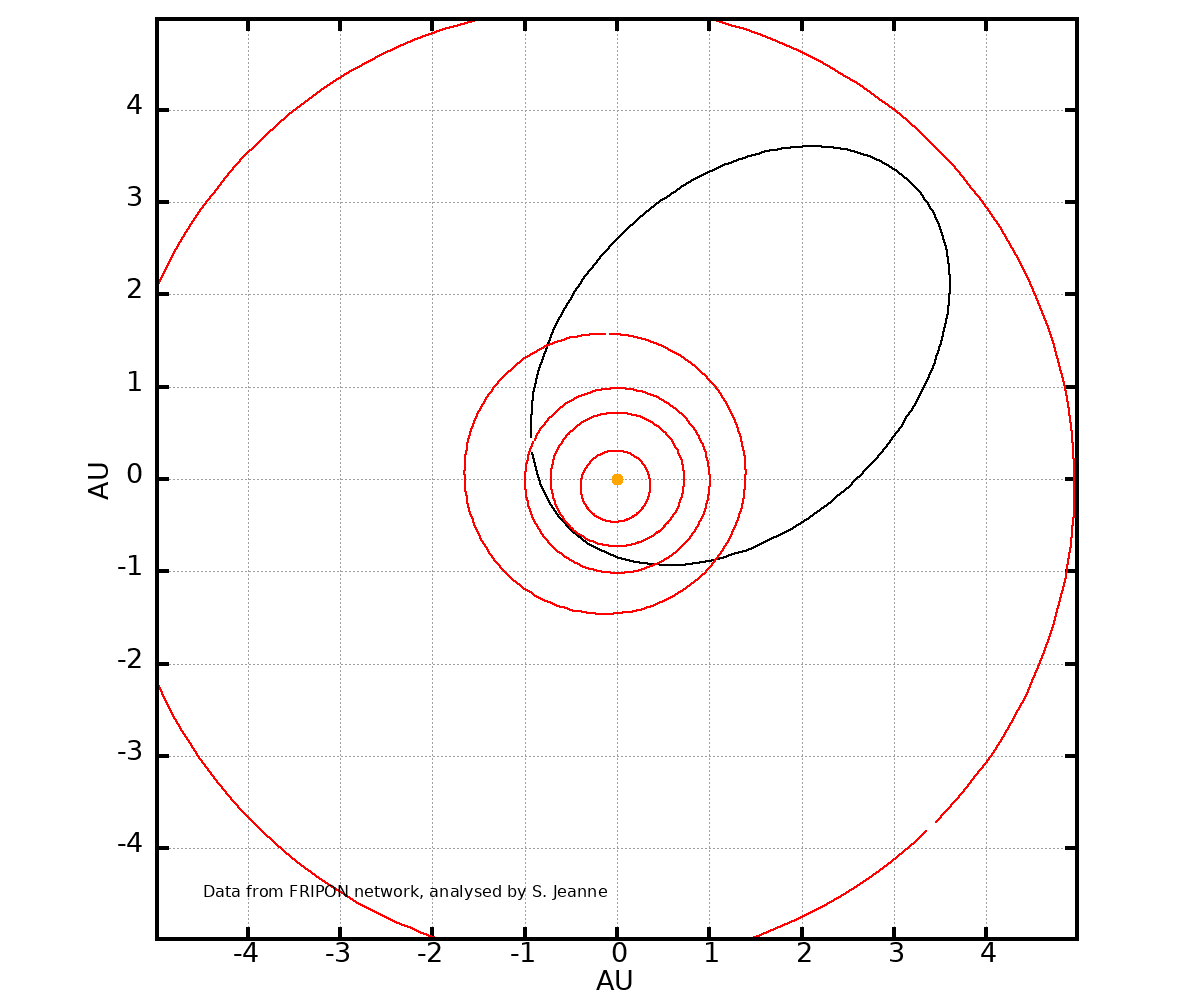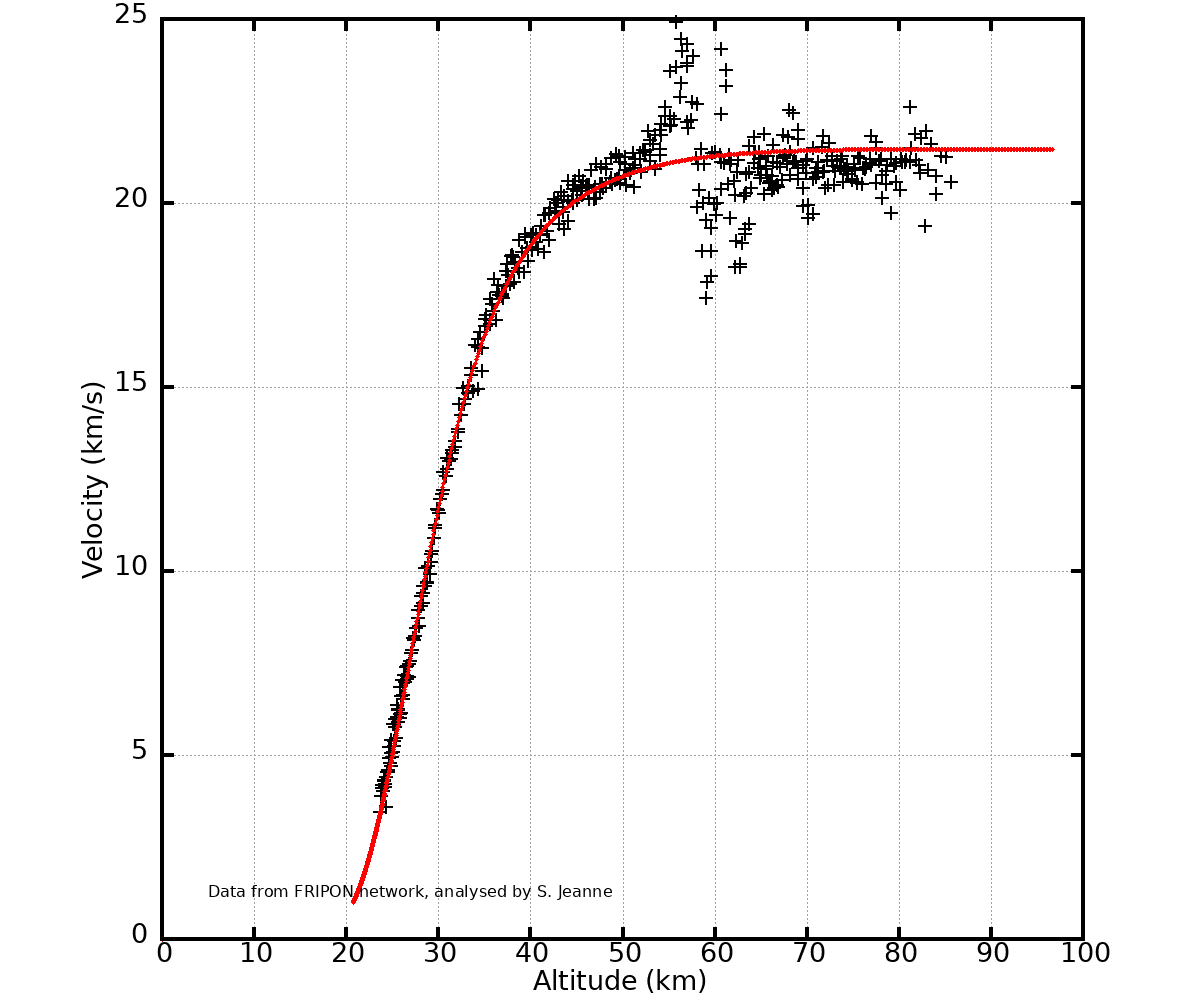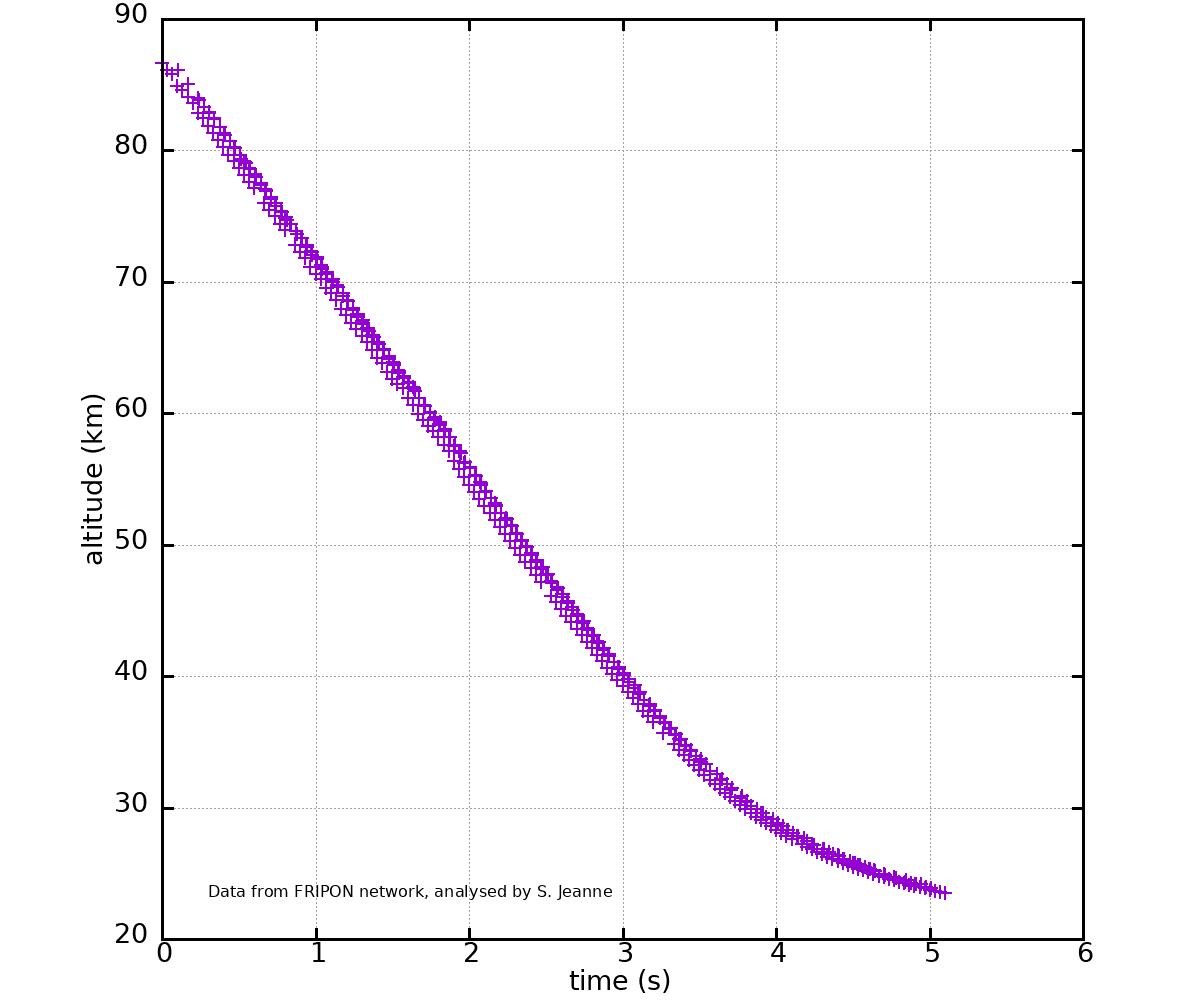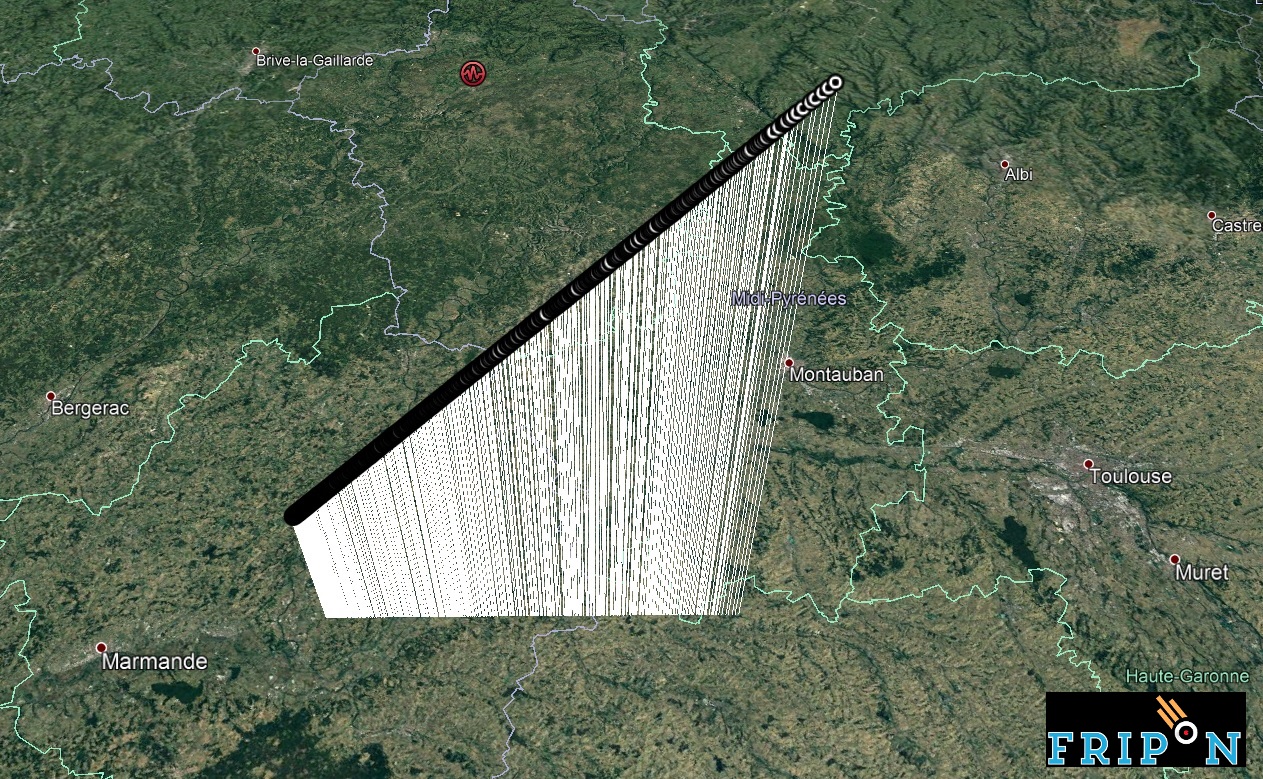Complete and update informations about the event can be found FRIPON/Vigie-Ciel web site for the fireball and for the research campaign.
In the evening of Saturday, February 27, 2021, at 21:43 UTC, a luminous fireball flew over the South-West of France, under the eyes of several dozens of witnesses (from all the French regions located in the South of the Paris area reported on the Vigie-Ciel platform) and the view of 9 FRIPON cameras.
Detail of the event can be seen here :


The bolide of February 27, 2021, 21h 43min UT, filmed with the Fripon cameras of Cahors, Cavarc, Mauroux and Toulouse @Fripon/Vigie-Ciel
Results of FRIPON pipeline process
The entry speed of the fireball was 21.5 km/s (figure 4) . Its orbit is that of a classical near-Earth object with an aphelion in the asteroid belt between Mars and Jupiter. Its initial mass was 500 g. Some bursts can be seen on the light curves at an altitude of 70 km and 65 km implying a fragmentation process.
The calculations carried out by the FRIPON team determined that a part of the object which caused the bolide of February 27, 2021 at 21h43m UTC survived its entry in the atmosphere. Our calculations predict an initial mass of 500g and a final mass of 150g. Our Canadian colleagues (Denis Vida of the University of Western Ontario) find a comparable final mass between 50 and 500g. We note that the parameters of the February 27 event are quite compatible with the production of a meteorite: (i) initial velocity of 21.5 km/s, (ii) final velocity of 3.3 km/s and (iii) a final altitude of 23.5 km
Field search
The research was organized by the FRIPON/Vigie-Ciel relay closest to Aiguillon: the association À Ciel Ouvert/La Ferme des étoiles whose members were trained in the Vigie-Ciel participation protocols.
Mediators, researchers, enthusiasts and curious people met with a common goal. For a week, they took turns to walk the indicated area, interviewing passers-by, distributing leaflets, requesting access authorizations from landowners and inviting them to participate. The gendarmerie of Aiguillon, the town hall and the shopkeepers had also been contacted, as well as the press. Everyone was invited to participate in the search if they wish, by looking in their own garden or during walks in the countryside. The Aiguillon meteorite has still not been found, but this strategy was effective in the case of the Winchcombe meteorite which fell in England the day after the Aiguillon meteorite!
To learn more about the event , go to www.vigie-ciel.org and sign up to participate

